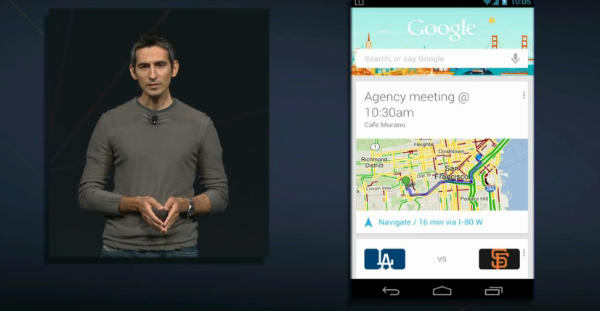When it comes to the latest in mobile technology, Android 4.1 Jelly Bean features truly stand out with a variety of exciting enhancements designed to elevate the user experience. This update introduces ‘Project Butter,’ which significantly improves performance by ensuring that the operating system operates smoothly at 60 frames per second. Additionally, the improved predictive keyboard adjusts to context, while the revamped notification system makes interactions more seamless. Android updates like these showcase Google’s commitment to refining the Android operating system. With new capabilities such as offline voice typing and an enriching camera app, Android 4.1 improvements promise to keep users engaged and satisfied with their devices.
Exploring the innovations in Android 4.1 Jelly Bean offers a glimpse into the evolution of mobile operating systems. This iteration brings a suite of new features that optimize functionality and user interaction. For instance, enhancements like ‘Project Butter’ address performance issues, ensuring smoother operation. The OS also introduces a more interactive notification system and an efficient predictive text input, emphasizing user convenience. Upgrades like the integration of Google Chrome as the default browser and offline speech recognition highlight the significant strides made in the Android platform.
Introduction to Android 4.1 Jelly Bean Features
Android 4.1 Jelly Bean introduces a variety of enhancements designed to improve user experience and functionality within the operating system. This latest update marks a significant milestone, offering incremental updates that enrich the smartphone experience without overwhelming users with drastic changes. Many of the features included in this release focus on performance optimization and user interface improvements, ensuring that Android remains a competitive mobile operating system in a rapidly evolving landscape.
Among the highlights of Jelly Bean is the introduction of ‘Project Butter,’ which fundamentally revamps how Android renders on devices. By ensuring that the system operates at a smooth 60 frames per second, users can expect a more fluid interaction with their devices. This update encapsulates Google’s commitment to a seamless user experience, presenting enhancements that subtly elevate the overall performance while keeping the interface familiar.
The Impact of Project Butter on Android Performance
Project Butter is a cornerstone feature of Android 4.1, representing substantial improvements in responsiveness and smoothness across the platform. This initiative addresses lag issues that were frequently reported in previous Android versions, particularly during fast scrolling and gaming. With optimized CPU touch responsiveness, every interaction feels immediate, allowing users to enjoy a more engaging experience. The 60 frames per second rendering not only enhances performance but also contributes to better battery management, as the system intelligently allocates resources where they are most needed.
The transition to Project Butter demonstrates Google’s ongoing effort to refine the Android operating system, making it more user-friendly and efficient. Developers can leverage this improved performance to create applications that take full advantage of the updated framework, thus fostering an ecosystem of high-quality apps that further enhances the user experience. With every update, Google continues to strengthen its place in the mobile operating system market, addressing user needs and preferences effectively.
Key Enhancements in Jelly Bean’s User Interface
Android 4.1 Jelly Bean features a self-correcting home screen arrangement that revolutionizes how widgets and app shortcuts are displayed. This innovative mechanic allows widgets to resize dynamically to fit available screen space, thus promoting a more organized look on the user’s home screen. With app shortcuts adjusting automatically around resized widgets, the layout remains tidy and functional, maximizing the use of screen real estate. This user interface enhancement represents a significant improvement over previous versions and illustrates Android’s commitment to creating an intuitive environment.
Additionally, the Jelly Bean update introduces a predictive keyboard and an advanced notification system that prioritizes user interaction. The keyboard anticipates the next word based on user input and context, streamlining the typing process significantly. Meanwhile, the revamped notification system allows users to interact directly with Gmail notifications and call contacts directly from their notification tray. This level of integration enhances workflow, making it easier for users to multitask and access essential functions seamlessly.
New Features for Enhanced Communication
In an age where communication is key, Android 4.1 Jelly Bean introduces features tailored to improve user interactions. The enhanced speech recognition and voice typing capabilities now include an offline mode, ensuring that users can dictate messages and commands without requiring constant internet access. This development is particularly beneficial for users in areas with limited connectivity, as it broadens the scope of usability and accessibility.
Furthermore, support for additional languages—including Arabic, Hebrew, Persian, Hindi, and Thai—demonstrates Google’s commitment to diversity and inclusion in the Android ecosystem. By accommodating various languages and providing bi-directional text support, Android 4.1 caters to a wider audience, enabling more users to engage with their devices in their preferred language. This multilingual capacity not only enhances user experience but also reflects the global nature of mobile technology.
Camera Improvements in Android 4.1
The Jelly Bean Camera app introduces a series of improvements designed to enhance photo management and review capabilities. With a new review mode that allows users to easily scroll through their photos using a pinch-to-zoom gesture, users can discard unwanted images directly from the album view. This streamlined process eliminates the hassle of navigating back to the main screen, making photo management quicker and more efficient. Additionally, the user-friendly approach aligns with the intuitive design ethos that Android aims to uphold.
These enhancements to the camera interface not only improve usability but also elevate the overall experience of photo capturing and browsing. As mobile photography continues to gain popularity, features like this cater to the needs of modern users who demand flexible and powerful tools at their fingertips. By refining its camera function, Android 4.1 Jelly Bean ensures that photography enthusiasts can take full advantage of their device’s capabilities.
Advancements in Android Beam Technology
Android 4.1 Jelly Bean presents a noticeable upgrade to Android Beam, which facilitates seamless inter-device communication through NFC technology. This enhancement allows users to transfer information swiftly via Bluetooth, making it easier to share content such as documents, photos, and multimedia files with others. The simplicity of tapping devices together to share information reflects the gradual evolution of mobile technology, emphasizing connectivity and ease of use.
The introduction of this improved functionality showcases Google’s dedication to enhancing user experience by employing technologies that resonate with everyday needs. Users can now enjoy a frictionless method of transferring data, which is especially beneficial in social situations where quick sharing of information is desirable. This commitment to advancing connectivity ensures that Android remains at the forefront of mobile operating system innovation.
Interactive Notifications in Jelly Bean
With the introduction of an actionable notification system in Android 4.1, users now have more control over their notifications than ever before. Instead of merely viewing alerts, users can interact with notifications directly, answering emails, or making calls instantly without needing to navigate through many menus. This innovation is a reflection of modern users’ demands for efficiency and accessibility in their mobile experience.
Moreover, the new Gmail notifications transform into a full inbox view, enhancing the functionality of each alert. Users can engage with Google Plus updates and see posts directly from the notification tray, thus providing a more integrated experience across the platform. These advancements not only streamline how information is received and processed by users but also align with evolving trends in mobile user interfaces.
Google Chrome Integration in Jelly Bean
Android 4.1 Jelly Bean marks a significant shift in browsing capabilities, as the stock Android browser has been completely replaced with Google Chrome. This change brings a wealth of benefits, including improved speed, stability, and the familiar interface that many users have come to prefer on various devices. Google’s emphasis on maintaining a seamless cross-platform experience reinforces the importance of consistency, which is essential for user satisfaction.
With this transition, users can now enjoy the synchronization features Chrome offers, including saved bookmarks and browsing history across mobile and desktop devices. This level of integration enhances usability for individuals who rely heavily on web-based applications and services. By adopting Google Chrome as the default browser, Android 4.1 aligns itself with user preferences for reliable and feature-rich browsing experiences.
Conclusion: A New Era for Android Users
In summary, Android 4.1 Jelly Bean represents a crucial update to Google’s mobile operating system, prioritizing performance, usability, and user experience. With key features such as Project Butter, improved user interface elements, and enhanced communication tools, Jelly Bean sets a strong foundation for future iterations of Android. As technology continues to evolve, updates like these ensure that users remain engaged and satisfied with their devices.
Ultimately, the incremental nature of these improvements signals Google’s commitment to refining its operating environment. By listening to user feedback and incorporating necessary changes, Android continues to evolve, keeping pace with industry standards and user expectations. Android 4.1 Jelly Bean lays out a bright future for Android users, offering them tools and features that enrich their daily interactions.
Frequently Asked Questions
What are the main features of Android 4.1 Jelly Bean that enhance user experience?
Android 4.1 Jelly Bean introduced several notable features aimed at improving user experience. Key enhancements include ‘Project Butter’, which ensures smoother performance with 60 frames per second rendering and improved touch responsiveness. The predictive keyboard helps users type faster by anticipating word choices, while the new notification system allows for direct actions from notifications, such as replying to messages without opening apps.
How does Project Butter improve the performance of Android 4.1 Jelly Bean?
Project Butter is a core initiative in Android 4.1 Jelly Bean that significantly improves system performance by enhancing smoothness and responsiveness. It achieves this by optimizing the graphics rendering process to run at 60 frames per second, which reduces stutter and lag. Additionally, CPU Touch Responsiveness boosts performance during touch interactions, resulting in a more fluid and tactile user experience.
What improvements does Android 4.1 Jelly Bean offer in terms of voice recognition?
Android 4.1 Jelly Bean enhances voice recognition capabilities with updates to Google Voice Search, enabling users to engage in a more conversational question-and-answer format, similar to Siri on Apple devices. Moreover, the offline mode for voice typing allows users to dictate text without an internet connection, making it more versatile and user-friendly.
Can you explain the new notification features introduced in Android 4.1 Jelly Bean?
The notification system in Android 4.1 Jelly Bean is upgraded to offer actionable notifications, allowing users to interact directly from the notification shade. For instance, users can respond to messages or see emails in full within notifications without launching the respective apps. This feature improves efficiency, making it easy to manage notifications on the go.
What are the benefits of the Jelly Bean Camera app in Android 4.1?
The Jelly Bean Camera app in Android 4.1 introduces a review mode that enhances photo management. Users can utilize pinch-to-zoom gestures to switch to a filmstrip view, making it easy to swipe through photos and discard unwanted ones. This user-friendly interface simplifies the photography experience, reflecting a thoughtful design that caters to photo enthusiasts.
How does Android 4.1 Jelly Bean handle multilingual support?
Android 4.1 Jelly Bean expands its multilingual capabilities by adding support for languages like Arabic, Hebrew, and Persian, along with enhanced bi-directional text support. This feature ensures that users from diverse linguistic backgrounds can navigate and use the operating system more effectively, thus broadening accessibility.
What is Android Beam in Jelly Bean and how does it enhance device connectivity?
Android Beam is a feature in Android 4.1 Jelly Bean that allows for easy data transfer between devices using NFC (Near Field Communication). It facilitates sharing content like photos and links with just a tap between two devices, enhancing inter-device communication and making data sharing more intuitive and seamless.
How does Android 4.1 Jelly Bean improve the home screen experience?
In Android 4.1 Jelly Bean, the home screen features an improved self-correcting arrangement for widgets and app shortcuts. Widgets can now resize to better fit the screen, and app shortcuts will realign themselves around them automatically. This enhancement ensures a cleaner and more organized home screen layout, optimizing the available space for users.
| Feature | Description |
|---|---|
| Project Butter | Improves user interface performance by running the OS at 60 fps and enhancing CPU responsiveness. |
| Self-Correcting Home Screen | Widgets resize to fit the available space; app shortcuts realign automatically. |
| Predictive Keyboard | Anticipates and suggests the next word based on context while typing. |
| Offline Speech Recognition | Voice typing can be used without an internet connection. |
| Support for Additional Languages | Adds support for Arabic, Hebrew, Persian, Hindi, and Thai, including bi-directional text. |
| Gesture Mode | Enhanced for visually impaired users, combining touch and voice controls. |
| Camera App Improvements | New review mode allows users to easily discard photos using swipe gestures. |
| Android Beam | Supports NFC for data transfer between devices and Bluetooth connectivity. |
| Google Chrome Browser | Replaces the stock Android browser; improves internet browsing experience. |
| Actionable Notifications | Allows direct actions from notifications like calling or interacting with messages. |
| Updated Google Voice Search | Introduces an interactive question-and-answer format similar to Siri. |
| Multicast DNS Service Discovery | Enables apps to discover peer device services over Wi-Fi. |
Summary
Android 4.1 Jelly Bean features a range of innovative enhancements that streamline the user experience and improve device performance. With transformative updates like Project Butter for smoother graphics and an offline speech recognition feature, Jelly Bean aims to elevate usability. The new predictive keyboard, gesture mode, and an upgraded camera interface also contribute to a more intuitive interaction. In addition, the fresh Google Chrome integration and actionable notifications deliver a seamless experience across applications. Overall, Android 4.1 Jelly Bean embodies a robust, user-centric evolution of the Android platform.



